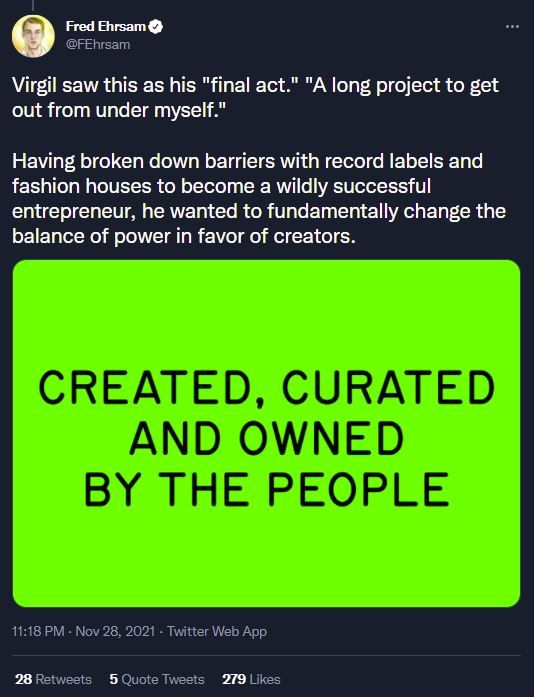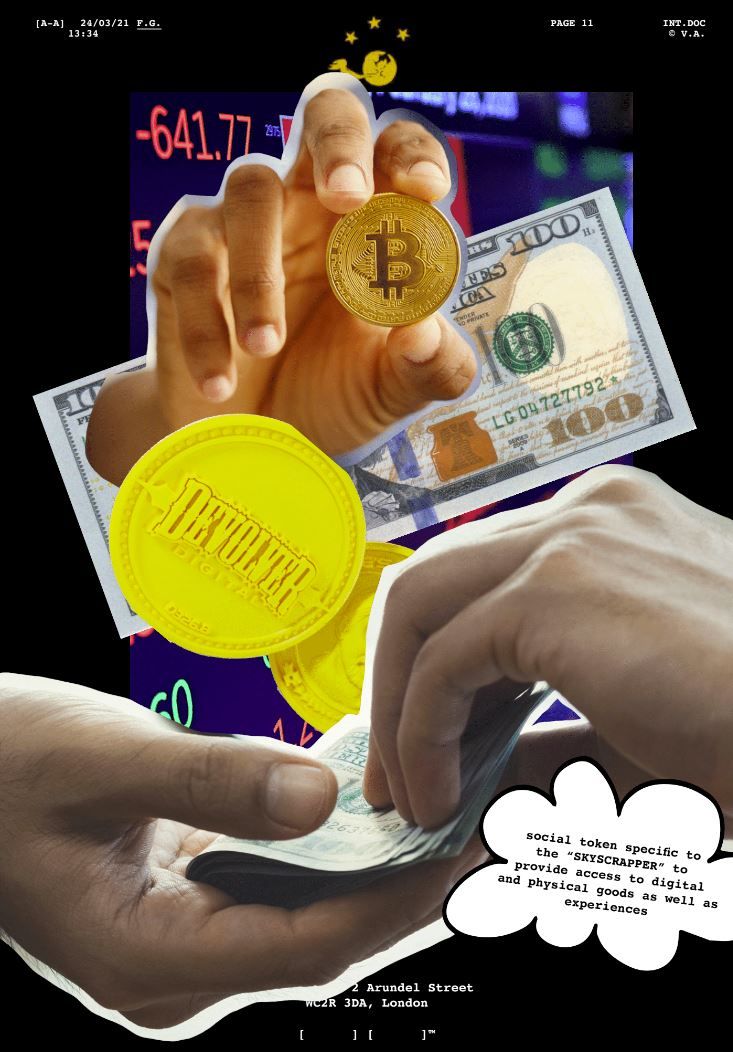Much has already been said about Virgil Abloh following his unexpected death last week. Best known for being a fashion designer and entrepreneur, he was the head of luxury clothing brand Off-White, artistic director at Louis Vuitton and the creative director of Donda. Relative to his large following of fashion enthusiasts (and despite dropping his first 1/1 NFT earlier this year, seen below), few knew that Abloh had immersed himself in speculating about and planning for the possibilities offered by Web 3.0.

To recap, Web 1.0 was the genesis of the Internet, allowing users to store and search for information online, with early online commerce represented by simple shopping websites being one of the first notable use-cases of the Internet. Web 2.0 has largely been identified by its focus on social interaction and developments in code, user interface and user experience, making connectivity a normal part of life for many. Web 3.0 is in its early days, but is being positioned as an online future marked by decentralization, which is currently represented by unified identities, open-source development and the use of trustless and permissionless cryptocurrencies. One of the overarching themes of Web 3.0 is the accessibility that it will create, breaking down barriers previously erected by others.

Following Abloh’s death, Fred Ehrsam, co-founder of Coinbase, posted a string of tweets describing Abloh’s vision for Web 3.0 and how Abloh would be leveraging NFTs and decentralized networks to “change the balance of power in favor of creators.” The two had been working together to launch a DAO called Skyscraper, which was envisioned as a digital community powered by a new social token that would empower artists.

The design document for the DAO explained its mission as follows:
- A space to create (mint) and curate NFTs;
- A marketplace where both digital artwork and physical products can be bought and sold;
- A gallery showcasing the best digital art exhibitions where you can also purchase individual pieces;
- A mechanism and advertising space for product drops that are unique and only accessible by purchasing through the [PAPER] token;
- A vehicle to drive audience growth for iconic but less-accessible brands
Despite his monumental success within established industries, Abloh focused on encouraging young artists and designers from breaking into their desired artistic spaces. The high prices attached to his Off-White t-shirts were meant to inspire young designers who couldn’t afford them that they, too, could attain his level of success by screen-printing their own clothing: “‘I’m here to be an inspiration to kids that were like me, are like me, that didn’t believe that design was for them. That starts and ends my design mission… I’m a son of two African parents who came to America to give their children opportunity. I could easily be the kid in Accra, Ghana, with limited means, without the access. So the fact that I have it, the privilege that I have – every day I wake up and think, ‘what can be done?’”
Similar ideas of accessibility and creativity have inspired many young artists who had their first experience minting NFTs this past year. It’s not yet clear whether others will pick up where Abloh left off with plans for the DAO. But even in its absence, others may spring up in its place, implementing the same principles that Abloh found so compelling and critical for this time.


